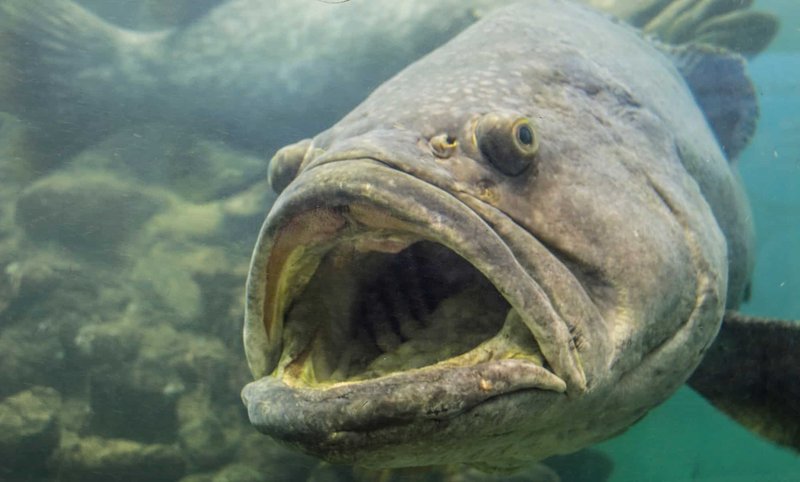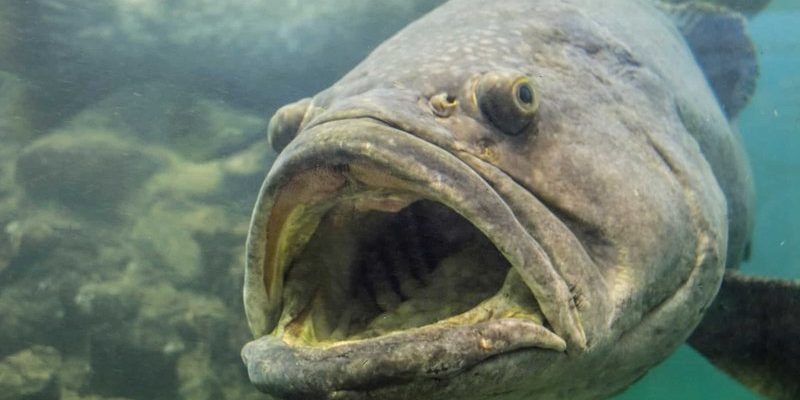
Grouper belong to a family of fish called Epinephelidae, which includes many species known for their stout bodies and big mouths. They often inhabit coral reefs and rocky areas, making them popular among divers and anglers alike. So, let’s dive into this fascinating world and discover some fun and surprising facts about grouper that might just make you appreciate these fish a little more.
1. Grouper Come in Many Varieties
You might be surprised to learn that there are over 160 species of grouper swimming in our oceans! Each species varies in color, size, and habitat, which makes them truly diverse. For instance, the *Goliath grouper*, one of the largest in the family, can reach lengths of up to 8 feet and weigh as much as 800 pounds. That’s like having a small car submerged beneath the waves!
On the other hand, you have the *Nassau grouper*, which is smaller but equally fascinating. It typically grows to about 2 feet in length and is known for its striking blotched pattern. It’s interesting how different species adapt to their environments—some prefer shallow waters, while others thrive in deeper depths.
2. They Are Masters of Camouflage
Grouper are like the chameleons of the sea; they can change their color to blend into their surroundings. This ability to camouflage helps them avoid predators and sneak up on their prey. Imagine a grouper lying in wait, perfectly matched with the coral or rocky seabed, ready to pounce when a hapless fish swims by.
This skill isn’t just for hunting; it also plays a role in communication. Grouper use their color changes to signal other fish, particularly during mating. As you can see, their camouflage isn’t just a party trick; it’s a vital part of their survival!
3. Grouper Have Unique Feeding Habits
Grouper are voracious eaters. They mainly feast on crustaceans, other fish, and sometimes even octopuses! What’s truly fascinating is how they eat. Rather than nibbling delicately, they often launch themselves at their prey with incredible speed, using their powerful jaws to engulf meals whole.
Think of it like a vacuum cleaner on high power. Their mouths are designed for suction, making it easy for them to inhale their food. This method may not be the most refined, but it sure is effective! Dumplings vs. steaks; if you’re a grouper, you’d definitely go for the steak!
4. They Can Live a Long Time
Grouper are not only big but also long-lived. Some species can live for over 30 years! This longevity gives them a chance to grow significantly and experience a lot of their underwater world. Just think about it—a grouper can be around long enough to witness entire ecosystems change over the decades.
This long life also plays a key role in their reproduction. Older grouper often contribute to spawning events that help maintain healthy populations. So, the next time you see one, remember: it might have a story or two to tell!
5. Goliath Grouper Are the Gentle Giants
Among all the varieties, the *Goliath grouper* holds a special title: the gentle giant of the seas. Despite their intimidating size, these grouper are generally calm and non-aggressive towards divers. They can be quite curious! Sometimes, they’ll even approach people, almost as if they’re saying hello.
However, it’s essential to respect their space. Though they’re friendly, they’re still wild animals. Seeing a Goliath grouper up close can be a thrilling experience, like meeting a celebrity of the underwater world.
6. They Play Important Roles in Their Ecosystems
Grouper are more than just fascinating creatures; they have critical roles in their ecosystems. As predators, they help control populations of other fish and invertebrates, maintaining a healthy balance in marine life. This includes keeping species like parrotfish in check, which in turn helps protect coral reefs from overgrazing.
You could say grouper are like the keepers of the reef, ensuring everything runs smoothly. Their presence—or absence—can impact the entire ecosystem, showing that even one type of fish can make a big difference.
7. Some Species Are Endangered
It’s sad to note that many grouper species are under threat. Overfishing and habitat destruction pose significant dangers to their populations. For example, the *Nassau grouper* is considered endangered due to its declining numbers.
Efforts are being made worldwide to protect these majestic creatures. Many regions have implemented fishing regulations to ensure grouper populations can recover. Supporting sustainable fishing practices can help keep these fish swimming in our oceans for generations to come.
8. They Can Change Gender!
Here’s a fun twist in the grouper story: some species can change their sex! This unique feature is known as sequential hermaphroditism. Typically, they start as females and can switch to males when the need arises—like when the population is small and needs more males for breeding.
This adaptability is nature’s way of ensuring the survival of the species. It’s just another reminder of how incredible and complex marine life can be. So, if you see a grouper, remember that it might have a few surprises up its sleeve!
9. Grouper Can Communicate Through Sounds
Grouper are not just silent swimmers; they can actually make sounds! They produce low-frequency noises, especially during mating rituals or when feeling threatened. Think about it: in the bustling underwater world, these sounds help them communicate without being seen.
This ability to express themselves adds another layer to their complex behaviors. It’s like having a secret language that helps them survive and thrive in their environment.
10. Grouper Are Popular in Culinary Dishes
Lastly, let’s touch on a more delicious topic: grouper is a popular choice in many seafood dishes. Their firm, white flesh is known for its mild flavor, making it a favorite among chefs and home cooks. From fish tacos to grilled fillets, grouper can be a delightful addition to your plate.
However, if you’re enjoying grouper, it’s a good idea to check if it comes from sustainable sources. Supporting responsible seafood choices helps protect these fascinating fish and the ecosystems they inhabit.
In conclusion, grouper are truly remarkable fish that offer a glimpse into the wonders of marine life. From their impressive size to their unique behaviors, these fish play significant roles in both their ecosystems and our culinary experiences. Next time you’re by the ocean or at a seafood restaurant, keep an eye out for the grouper—you just might have a newfound appreciation for this incredible creature!

